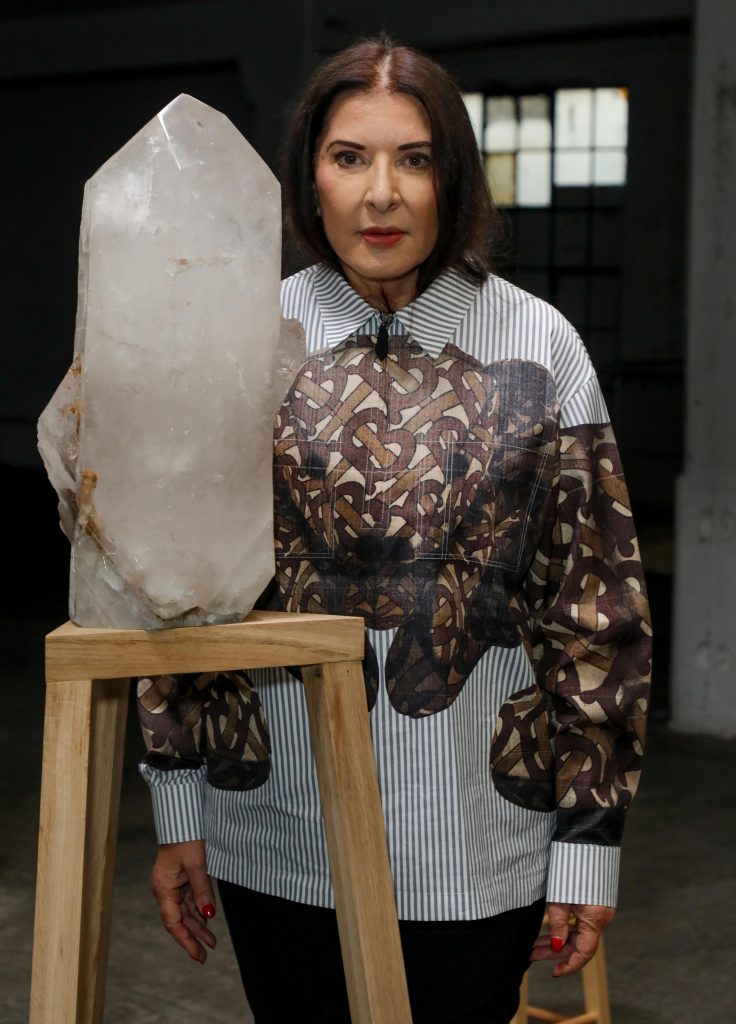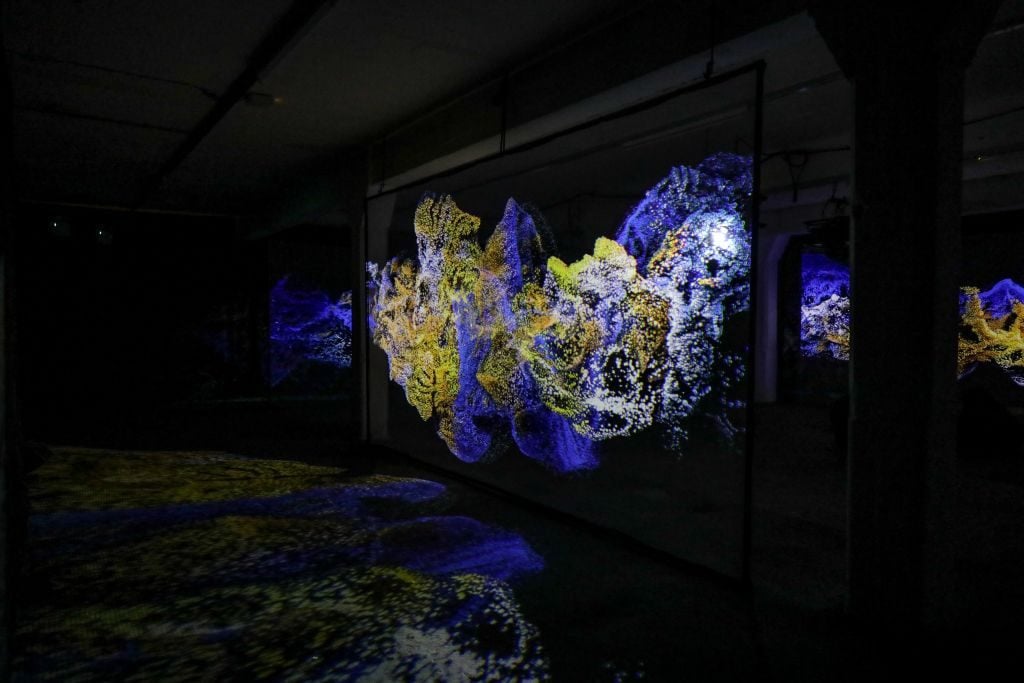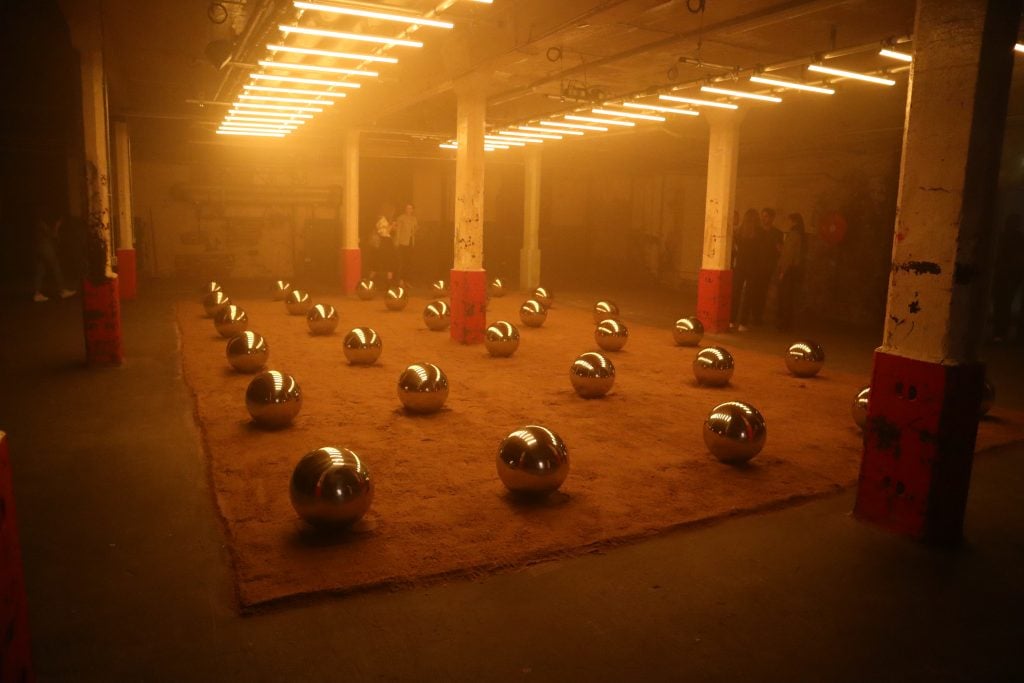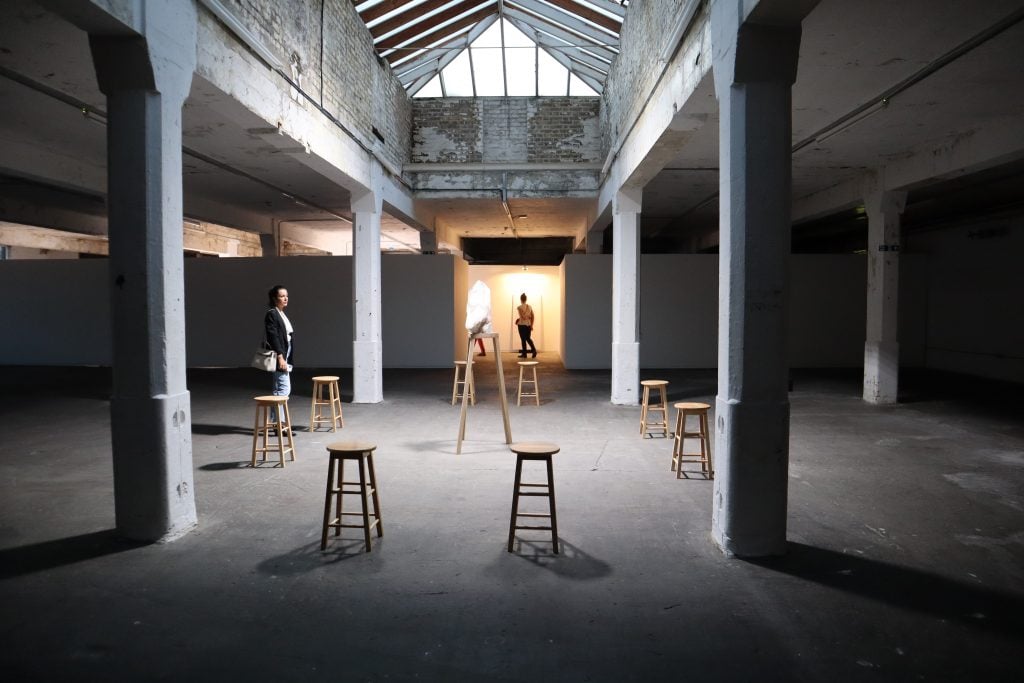On View
Marina Abramović’s New London Pop-Up Features Crystals, a Martian Rock, and an Immersive Van Gogh Room of Her Own
The performance artist's partnership with WeTransfer has yielded a multisensory experience in a former brewery in Shoreditch.

The performance artist's partnership with WeTransfer has yielded a multisensory experience in a former brewery in Shoreditch.

In her quest to transcend her physical body and live forever, Marina Abramović has done a lot of weird stuff.
Throughout her career, this pioneer of durational performance art has pushed the limits of her body and mind, withstanding pain, exhaustion, and bodily harm in her pursuit of emotional and spiritual transformation—from a three-month sojourn across the Great Wall of China with her former partner Ulay in 1988 to her 700-hour-long performance The Artist Is Present at New York’s Museum of Modern Art in 2010.
But in recent years, she has been experimenting with different media in an effort to bestow her work an afterlife beyond her own. Some have been more successful than others. (I’ve locked eyes with a blank-faced hologram of the artist at the Serpentine Galleries, and even eaten her in macaron form). But in her latest effort to surpass this mortal coil, the Serbian artist has partnered with the Internet-based file transfer service WeTransfer on an immersive experience in London.
Yes, you read that right. Well, technically it’s WePresent, which is the company’s lesser-known digital arts platform, but you get the idea, and together they have created a pop-up Marina Abramović experience. Called “Traces,” the exhibition is set in the Old Truman Brewery in London’s vibrant Shoreditch neighborhood and features five rooms, each of which commemorates an object that has been important to her life and work over the past five decades.

General view at the preview of ‘Traces’ by Marina Abramovic and WePresent by WeTransfer, at Old Truman Brewery in London. Photo by David M. Benett/Dave Benett/Getty Images for WePresent/WeTransfer.
The first room is dedicated to the Rose of Jericho, a desert plant that Abramović says embodies her faith in the power of life. Tripping on through to the second room, visitors will be met with a sure-to-be-popular moving-light show inspired by Van Gogh’s Starry Night. (The artist says the painting expresses something of her understanding of the cosmos, but even the Abramović fans among us can’t help being a little skeptical that this is not an effort to jump on the immersive Van Gogh bandwagon.)
In the third room, visitors sit around a big hunk of ancient quartz to experience Abramović’s 1991 work Crystal Cinema. Next, a bright room commemorates Susan Sontag’s crucial book-length essay Regarding the Pain of Others; which the artist said helped cultivate her sensitivity to human pain. Finally, in a room dedicated to a rock from Mars, visitors can listen to a recording of her 2015 work reciting the names of 10,000 stars (within an installation that I can’t help but note resembles another much-hyped artist’s work: Yayoi Kusama’s Narcissus Balls).

Installation view, Marina Abramović, “Traces.” Photo by Naomi Rea.
In a wide-ranging discussion with Tim Marlow, the director of London’s Royal Academy, which will hold a postponed retrospective exhibition with the artist in 2023, Abramović opened up about her interest in building her legacy. “What is incredibly powerful about performance is that it is immaterial. There’s nothing there except for the memory of the audience left,” Abramović said, adding that it is difficult to maintain or cherish the energy of the work outside of these memories.
While some of her performances have been photographed, and she has flirted with the idea of works being re-performed after her death—“Your work is not yours anymore, you give it up to the universe,” she said—she noted that she would “never” give permission for someone to repeat some of her most dangerous pieces, such as Rhythm 0, a risky performance the artist undertook at Studio Morra in Naples in 1974, when she was just 23: for six hours, she invited visitors to use any number of 72 objects she had laid out on a table, which ranged from feathers to a saw, on her body in any way they chose.

Installation view, Marina Abramović, “Traces.” Photo by Naomi Rea.
“I’m going to die one day—what do you do?” she said. “The digital is one solution, and mixed reality is another.” A digital version of the experience will run concurrently on WePresent (Abramović has been a guest curator on the platform for a year), alongside spotlights on five emerging performance artists and a digital manifestation of her masterclass, the Abramović Method.
The artist’s other recent experiments have included working in different styles of performance, such as opera—as in 7 Deaths of Maria Callas, which debuted in Munich last year—and creating an immersive cinematic experience of the work, Seven Deaths, which is currently on view at Lisson Gallery.
Marina Ambramović’s “Traces” is on view through September 12 at the Old Truman Brewery, 91 Brick Lane, London. Tickets can be booked for free online.